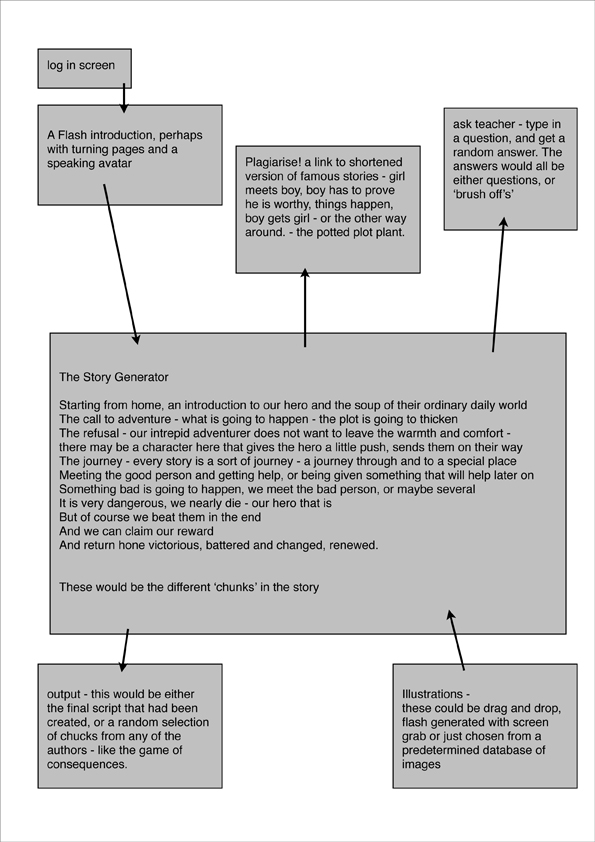The Story Teller's Apprentice

1 Starting from home, an
introduction to our hero and the soup of their ordinary
daily world
2 The call to adventure - what is going to happen - the
plot is going to thicken
3 The refusal - our intrepid adventurer does not want to
leave the warmth and comfort -
4 there may be a character here that gives the hero a
little push, sends them on their way
5 The journey - every story is a sort of journey - a
journey through and to a special place
6 Meeting the good person and getting help, or being given
something that will help later on, being tested.
7 Something bad is going to happen, we meet the bad person,
or maybe several, and prepare to engage in battle
8 It is very dangerous, we nearly die - our hero that is
9 But of course we beat them in the end And claim the
reward
10 They head for home, but they are pursued, it is not over
yet
11 A final life and death struggle
12 And return home victorious, battered and changed,
renewed.
1. Ordinary World
Start your story by setting the scene, this is a
description of the ordinary world from which the adventure
will spring, describe the setting, set the mood of the
story. This may be the point at which you introduce your
main characters, your Heroine or Hero.
2. Call to Adventure
This is the call to adventure that gets the plot rolling.
Ordinary life is disrupted with a problem that needs a
solution, or the developing of a situation. Your hero or
heroine may be given a challenge, set a task or quest.
3. Refuse the Call
Your main character refuses the call to adventure, gets
cold feet. They show that they are human. They don’t want
to get out of bed to risk failure or face danger. We have
to know that the journey will not be an easy one.
4. A Mentor
A bit of persuasion is needed from a Mentor. A bit of
advice and guidance. A push in the right direction. The
Mentor may not be a character, but could be an object, a
key, a map, or a book perhaps.
5. First Threshold
So the journey starts, the threshold is crossed and there
is no going back. Here you can get quite descriptive, build
up the mood of the characters and setting.
6. Tests, Allies and Enemies
Your heroine or hero faces tests and challenges. They prove
that they are worthy. They may find allies and makes
enemies. This is the initiation, the testing, the learning.
They may even meet the shadow character.
7. Approaching the Inmost Cave
This is the time for making plans and gathering the tools
and nerve to face the enemy.
8. Ordeal
Now they face an ordeal. This is a high point of the story.
Life and death is in the balance. They must overcome
difficult challenges and confront their fears.
9 Reward
The Heroine or Hero is triumphant, they have won. They have
stared death in the face and they have defeated it. They
have earned their reward, whatever this might be; riches or
love, or simply to have survived.
10. The Return
The return Journey may not be easy, but eventually they
will return to the ordinary world from which they departed.
There may well be dangers to be faced on the road back,
more challenges.
11. Resurrection
This may be the final challenge, and the biggest. The Hero
or Heroine may face the shadow directly, confront their
greatest fear or enemy, reach to the very brink of death,
offer the greatest sacrifice. And survive, purged, a worthy
Hero or Heroine.
12 Return Home
The travellers return to the ordinary world. They may be
wiser, or richer. They may have found love or knowledge.
Whatever the outcome, they have survived the ordeal, they
are changed.
The 7 Archetypes
1. The Hero - (or Heroine, or both) - the central character
of the story, the one who faces the challenges.
2. The Mentor - who provides motivation, encouragement,
support.
3. The Threshold Guardian - who protects the special world,
and tests the Hero
4. The Herald - who issues announcements, challenges and
messages
5. The Shapeshifter - who may mislead the Hero by wearing
masks, not being who they may seem to be
6. The Shadow - the dark side, the enemy, the villain, our
greatest fear or phobia.
7. The Trickster - the jester or clown who may use
cleverness, laughter and ridicule to make characters see
more clearly, to force change.
The word ‘archetype’ means the ‘typical’ or
‘original model’ - the ‘essence’ of a person, a behaviour
or a personality.
The psychologist Carl Jung is famous for his ideas on
archetypes - an understanding of character traits that we
are somehow born with, that is a deep part of our
subconscious, inherited as we inherit our language and our
culture.
We can all recognise the archetype of the good guy, or the
bad guy, no matter who we are or where we come from.
The 7 archetypes here have been identified as being
particularly relevant to fairy tales, myths and other
stories and tales.